The Pnictogen Bond, Together with Other Non-Covalent Interactions, in the Rational Design of One-, Two- and Three-Dimensional Organic-Inorganic Hybrid Metal Halide Perovskite Semiconducting Materials, and Beyond
- PMID: 35955945
- PMCID: PMC9369011
- DOI: 10.3390/ijms23158816
The Pnictogen Bond, Together with Other Non-Covalent Interactions, in the Rational Design of One-, Two- and Three-Dimensional Organic-Inorganic Hybrid Metal Halide Perovskite Semiconducting Materials, and Beyond
Abstract
The pnictogen bond, a somewhat overlooked supramolecular chemical synthon known since the middle of the last century, is one of the promising types of non-covalent interactions yet to be fully understood by recognizing and exploiting its properties for the rational design of novel functional materials. Its bonding modes, energy profiles, vibrational structures and charge density topologies, among others, have yet to be comprehensively delineated, both theoretically and experimentally. In this overview, attention is largely centered on the nature of nitrogen-centered pnictogen bonds found in organic-inorganic hybrid metal halide perovskites and closely related structures deposited in the Cambridge Structural Database (CSD) and the Inorganic Chemistry Structural Database (ICSD). Focusing on well-characterized structures, it is shown that it is not merely charge-assisted hydrogen bonds that stabilize the inorganic frameworks, as widely assumed and well-documented, but simultaneously nitrogen-centered pnictogen bonding, and, depending on the atomic constituents of the organic cation, other non-covalent interactions such as halogen bonding and/or tetrel bonding, are also contributors to the stabilizing of a variety of materials in the solid state. We have shown that competition between pnictogen bonding and other interactions plays an important role in determining the tilting of the MX6 (X = a halogen) octahedra of metal halide perovskites in one, two and three-dimensions. The pnictogen interactions are identified to be directional even in zero-dimensional crystals, a structural feature in many engineered ordered materials; hence an interplay between them and other non-covalent interactions drives the structure and the functional properties of perovskite materials and enabling their application in, for example, photovoltaics and optoelectronics. We have demonstrated that nitrogen in ammonium and its derivatives in many chemical systems acts as a pnictogen bond donor and contributes to conferring stability, and hence functionality, to crystalline perovskite systems. The significance of these non-covalent interactions should not be overlooked, especially when the focus is centered on the rationale design and discovery of such highly-valued materials.
Keywords: ICSD and CSD database analyses; IGM-δg analysis; MESP characterizations; inorganic-organic hybrid halide perovskites; intermolecular geometries and directionality; nitrogen as pnictogen bond donor; pnictogen bonding; sum of the van der Waals radii concept.
Conflict of interest statement
The authors declare no conflict of interest. The funders had absolutely no role in the design of the study; in the collection, analyses, or interpretation of data; in the writing of the manuscript; or in the decision to publish the results.
Figures

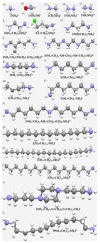


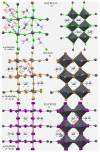



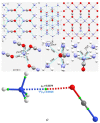
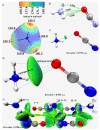


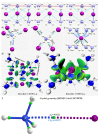

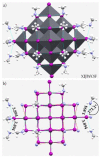
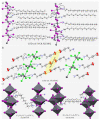
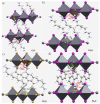
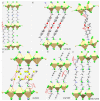
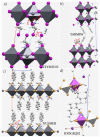
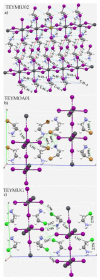
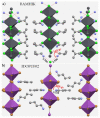








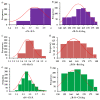
Similar articles
-
Methylammonium Tetrel Halide Perovskite Ion Pairs and Their Dimers: The Interplay between the Hydrogen-, Pnictogen- and Tetrel-Bonding Interactions.Int J Mol Sci. 2023 Jun 23;24(13):10554. doi: 10.3390/ijms241310554. Int J Mol Sci. 2023. PMID: 37445738 Free PMC article.
-
The Pnictogen Bond: The Covalently Bound Arsenic Atom in Molecular Entities in Crystals as a Pnictogen Bond Donor.Molecules. 2022 May 25;27(11):3421. doi: 10.3390/molecules27113421. Molecules. 2022. PMID: 35684359 Free PMC article. Review.
-
The Stibium Bond or the Antimony-Centered Pnictogen Bond: The Covalently Bound Antimony Atom in Molecular Entities in Crystal Lattices as a Pnictogen Bond Donor.Int J Mol Sci. 2022 Apr 23;23(9):4674. doi: 10.3390/ijms23094674. Int J Mol Sci. 2022. PMID: 35563065 Free PMC article. Review.
-
The Phosphorus Bond, or the Phosphorus-Centered Pnictogen Bond: The Covalently Bound Phosphorus Atom in Molecular Entities and Crystals as a Pnictogen Bond Donor.Molecules. 2022 Feb 23;27(5):1487. doi: 10.3390/molecules27051487. Molecules. 2022. PMID: 35268588 Free PMC article. Review.
-
Significance of hydrogen bonding and other noncovalent interactions in determining octahedral tilting in the CH3NH3PbI3 hybrid organic-inorganic halide perovskite solar cell semiconductor.Sci Rep. 2019 Jan 10;9(1):50. doi: 10.1038/s41598-018-36218-1. Sci Rep. 2019. PMID: 30631082 Free PMC article.
Cited by
-
Methylammonium Tetrel Halide Perovskite Ion Pairs and Their Dimers: The Interplay between the Hydrogen-, Pnictogen- and Tetrel-Bonding Interactions.Int J Mol Sci. 2023 Jun 23;24(13):10554. doi: 10.3390/ijms241310554. Int J Mol Sci. 2023. PMID: 37445738 Free PMC article.
-
Orthorhombic lead-free hybrid perovskite CH3NH3SnI3 under strain: an ab initio study.RSC Adv. 2024 Jun 20;14(28):19880-19890. doi: 10.1039/d4ra02804j. eCollection 2024 Jun 18. RSC Adv. 2024. PMID: 38903676 Free PMC article.
-
Halogen Bond via an Electrophilic π-Hole on Halogen in Molecules: Does It Exist?Int J Mol Sci. 2024 Apr 23;25(9):4587. doi: 10.3390/ijms25094587. Int J Mol Sci. 2024. PMID: 38731806 Free PMC article.
-
Computational applications for the discovery of novel antiperovskites and chalcogenide perovskites: a review.Front Chem. 2024 Oct 11;12:1468434. doi: 10.3389/fchem.2024.1468434. eCollection 2024. Front Chem. 2024. PMID: 39464385 Free PMC article. Review.
-
Tetrel Bonding in Anion Recognition: A First Principles Investigation.Molecules. 2022 Dec 2;27(23):8449. doi: 10.3390/molecules27238449. Molecules. 2022. PMID: 36500544 Free PMC article.
References
-
- Foster S.L., Bakovic S.I.P., Duda R.D., Maheshwari S., Milton R.D., Minteer S.D., Janik M.J., Renner J.N., Greenlee L.F. Catalysts for nitrogen reduction to ammonia. Nat. Catal. 2018;1:490–500. doi: 10.1038/s41929-018-0092-7. - DOI
-
- Uyanik M., Kato T., Sahara N., Katade O., Ishihara K. High-Performance Ammonium Hypoiodite/Oxone Catalysis for Enantioselective Oxidative Dearomatization of Arenols. ACS Catal. 2019;9:11619–11626. doi: 10.1021/acscatal.9b04322. - DOI
-
- Hinokuma S., Sato K. Ammonia Combustion Catalysts. Chem. Lett. 2021;50:752–759. doi: 10.1246/cl.200843. - DOI
-
- Lamb K.E., Dolan M.D., Kennedy D.F. Ammonia for hydrogen storage; A review of catalytic ammonia decomposition and hydrogen separation and purification. Int. J. Hydrogen Energy. 2019;44:3580–3593. doi: 10.1016/j.ijhydene.2018.12.024. - DOI
-
- US Geological Survey . Mineral Commodity Summaries 2020. US Geological Survey; Reston, VA, USA: 2020. - DOI
Publication types
MeSH terms
Substances
LinkOut - more resources
Full Text Sources

